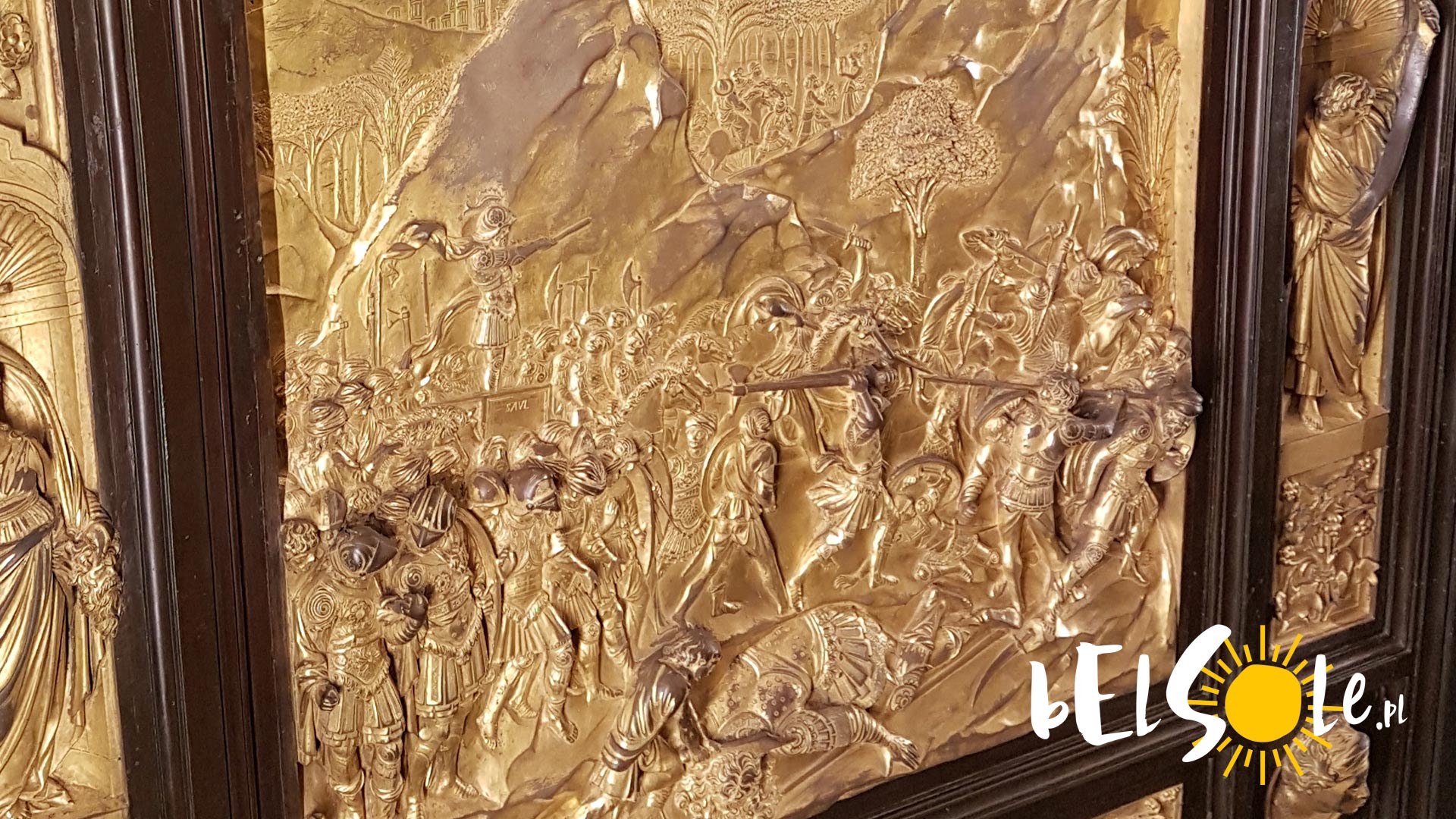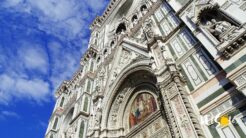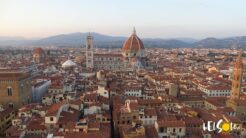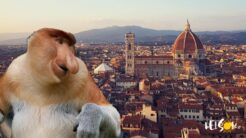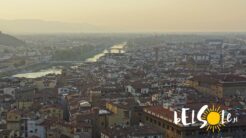The Florence Baptistery, located right next to Santa Maria del Fiore on the main square in Florence, is a remarkable place, a must-see on your itinerary in the city. But what is the Baptistery about? What’s the deal with the doors? How much does it cost to enter? Let’s go over all of that and more today.
The history of the Florence Baptistery
The Florence Baptistery, ergo the Baptistery of Saint John, is one of the oldest buildings in Florence, built somewhere between 1059 and 1128. Though, in the past, it was believed that the Baptistery was built on the site once occupied by a temple of Mars, this has been largely discredited and, instead, is now seen as an expansion of a previous baptistery, built somewhere around the 4th/5th century.
The Baptistery is built on an octagonal plan, a characteristic form for Christian baptisteries of the time. We know that the expansion into the new Baptistery, the one we know today, started around 1059, with Pope Nicholas II reconsecrating the site in the same year.
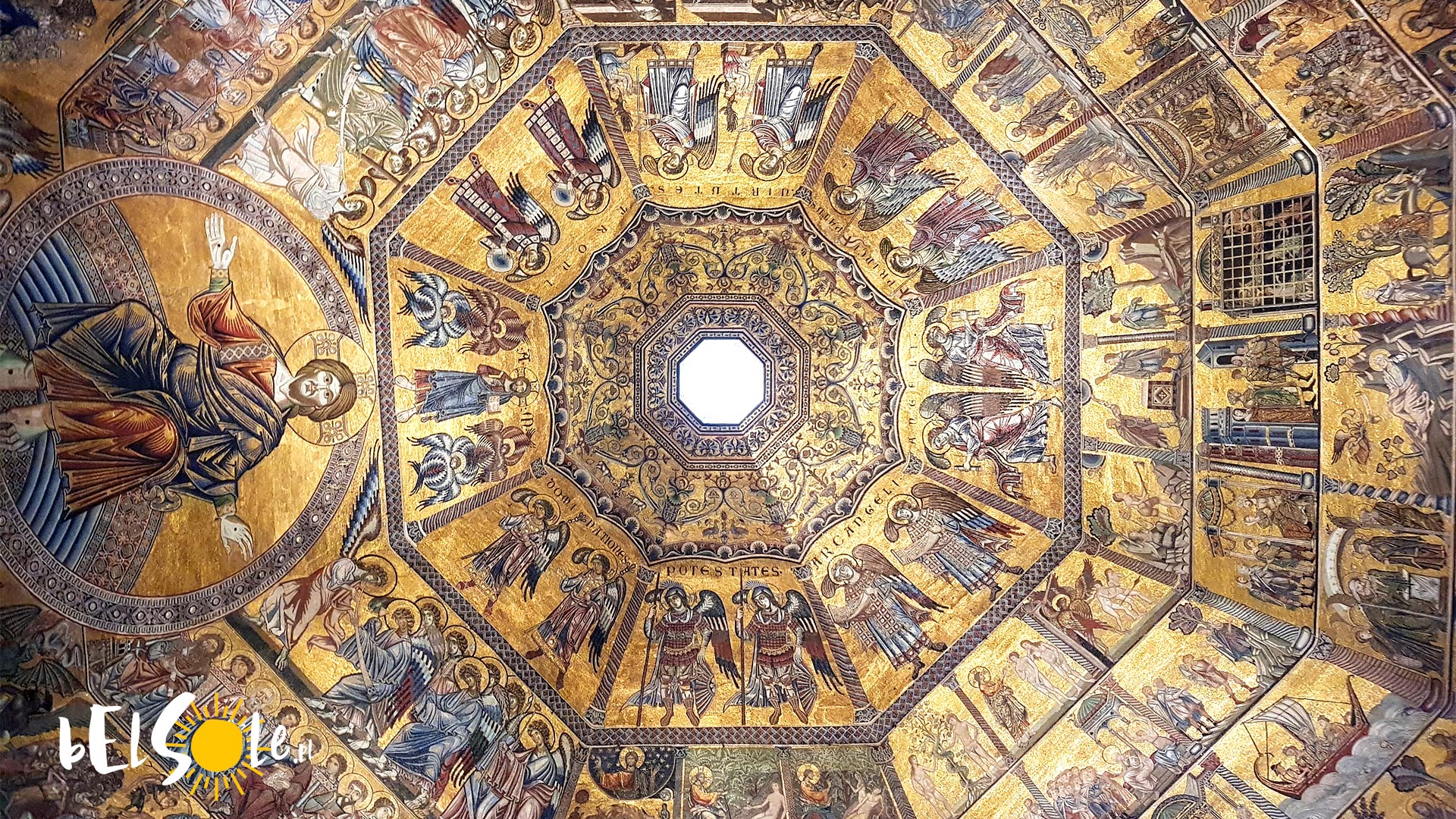
Small elements were added overtime, like an octagonal lantern on the roof around 1150. One thing to note is that, somewhere from the 14th to the 16th centuries, the Baptistery was adorned with very fancy decorated bronze double doors, proposing that the baptistery may have had a status comparable to that of the cathedral next door.
The façade of the Baptistery is in perfect harmony with the Florence Cathedral, mainly thanks to Carrara marble.
The doors of the Baptistery in Florence
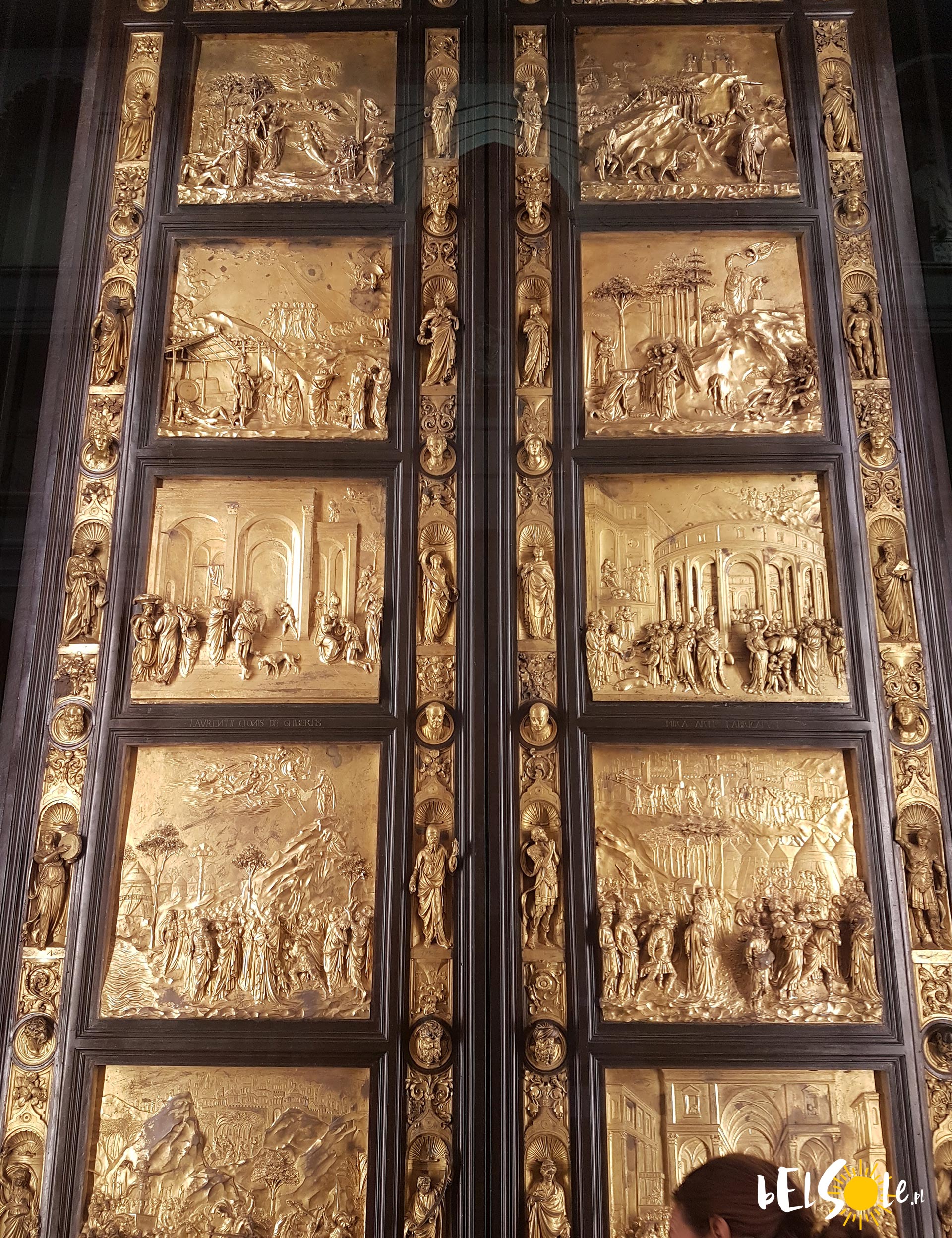
The doors of the Florence Baptistery, or ‘portals’, are an art piece in and of themselves. There are three main doors to the Baptistery, market as south, north and east. The south door was designed by Andrea Pisano in 1336 and took 6 years to create (and that’s the fastest one). The north and east doors were designed by Lorenco Ghiberti a bit later, in the 15th century. The north door took 21 years to produce (from 1401) and the east door (Porte del Paradiso) took 27 years (from 1424). What makes them so special?
Each is made in gilded bronze, full of details and scenes related to the history of Christianity and Florence. They’re stunning masterpieces alone, without even looking at the rest of the baptistery, and so they’ve gained a degree of renown for themselves. Mind you, the original ‘Gates of Paradise’, the east doors, are actually kept in the Museo dell’Opera del Duomo, while the Baptistery actually holds a copy. This is because the years of use have begun to destroy the doors and the details of the art pieces. The copies aren’t perfect replicas but certainly worthy of a visit nonetheless. You can also view other copies of the same doors in other parts of the world, like the US, Russia, and the Harrison Museum in Preston, UK.
The south doors in the Baptistery in Florence
The doors consist of 28 panels, including 20 scenes from the life of John the Baptist and 8 virtues. You may notice a Latin inscription on the door, Andreas Ugolini Nini de Pisis me fecit AD MCCCXXX. Perhaps somewhat disappointingly, it just reads ‘Andrea Pisano created me in 1330’.
The north doors in the Baptistery of Florence
These doors also consist of 28 panels, with 20 scenes from the life of Jesus and 8 scenes from the lives of the Evangelists. Originally, these were the eastern doors, though the Gates of Paradise later took priority.
The east doors in the Baptistery of Florence
The east doors, according to many, are the most beautiful and distinguished of the three, consisting of only 10 panels. Ghiberti created them with Michelozzo and Benozzo Gozzoli. The panels depicted scenes from the Old Testament. Each depicts the story in many small scenes. The panels include a richly decorated gilded frame of leaves and fruit, many statues of prophets and 24 busts.
Michelangelo called these the ‘Gates of Paradise’ or Porte del Paradiso, and to this day the door still bears this name unofficially.
Tomb of Antipope John XXIII
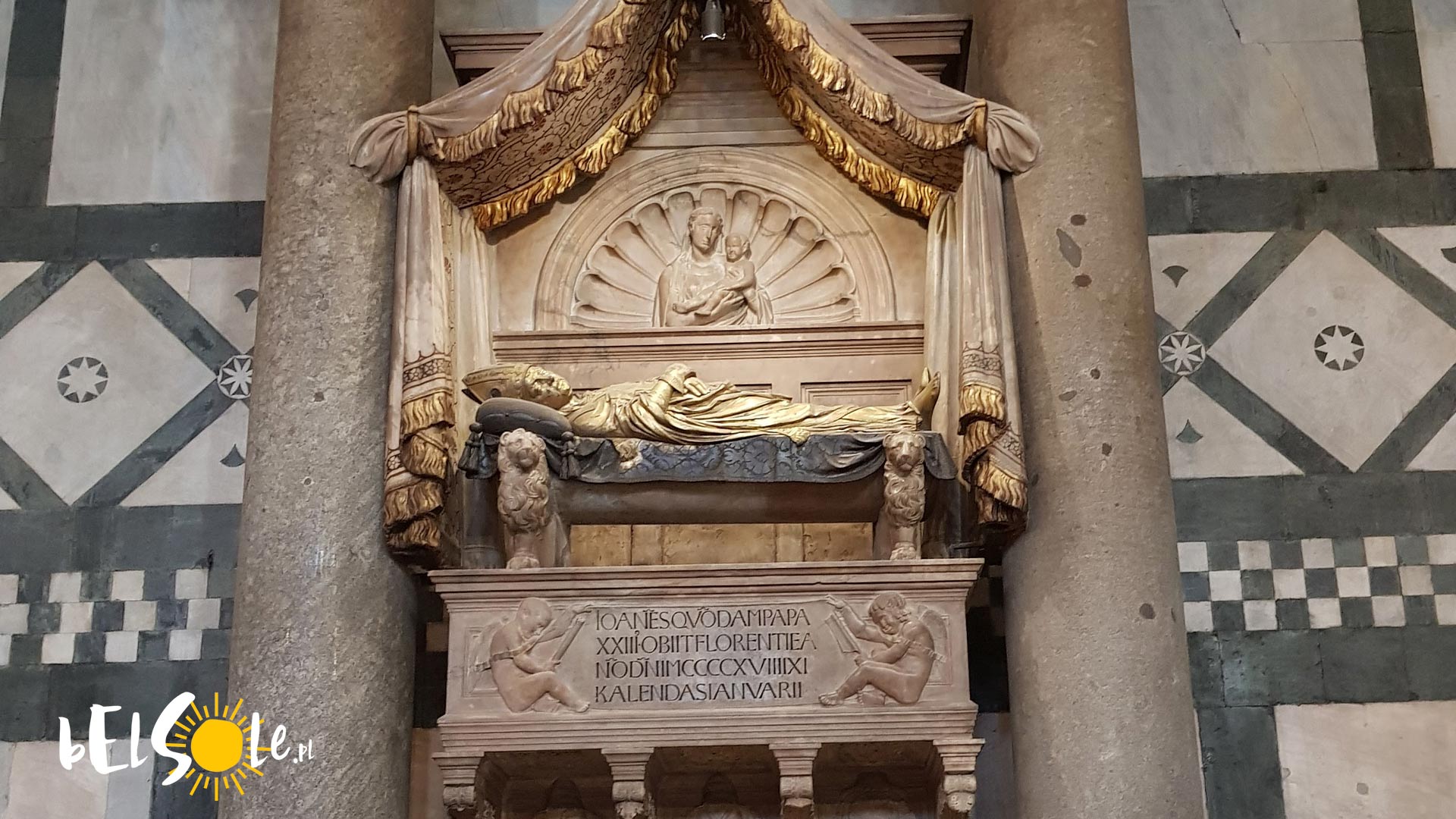
Of the famous parts of the Baptistery, there’s also the Tomb of the Antipope John XXIII inside. It was created by Donatello and Michelozzo. If you’re not familiar, an antipope is a person who effectively claims themselves the formal real pope and declares the actual pope a fraud. Baldassare Cossa, ergo Antipope John XVIII, was a successor to the previous antipope, Alexander V, so it’s not like Cossa began the trend or anything.
Cossa had quite a bit of success as an antipope, being recognised as the real pope by France, England, Bohemia, Prussia, Portugal and parts of the Holy Roman Empire. Eventually, though, he was deposed and Pope Martin V took over as the real recognised pope in 1415. Cossa, having practically no other choice, submitted to Martin V in 1419, though still declaring himself the ‘Cardinal of Florence’, when he was formally merely a Cardinal Bishop of Tusculum.
Florence Baptistery tickets
You, sadly, do need a ticket to the Baptistery of Florence, though you can also use the Firenze Card. The entry to the Baptistery is included in all of the official ticket variants on the official site of the Duomo (which you can check out here). You have three ticket variants: one for €15, one for €20 and one for €30.
The €15 variant, the Ghiberti Pass, gives you access to the Baptistery, the Opera del Duomo Museum and the Santa Reparata Basilica. The €20 variant, the Giotto Pass, adds Giotto’s Bell tower into the mix. Be warned that there’s no lift or anything, so it is advised that people with any physical disabilities, claustrophobia or major cardiovascular problems skip this one. Finally, we have the Brunelleschi Pass for €30, which also gives you access to Brunelleschi’s Dome. Similar deal, lots of stairs, sadly no real way for physically impaired people to get up. You can also opt for guided tours, though they’ll also include the combined trip, just like the solo tickets.
See also:



